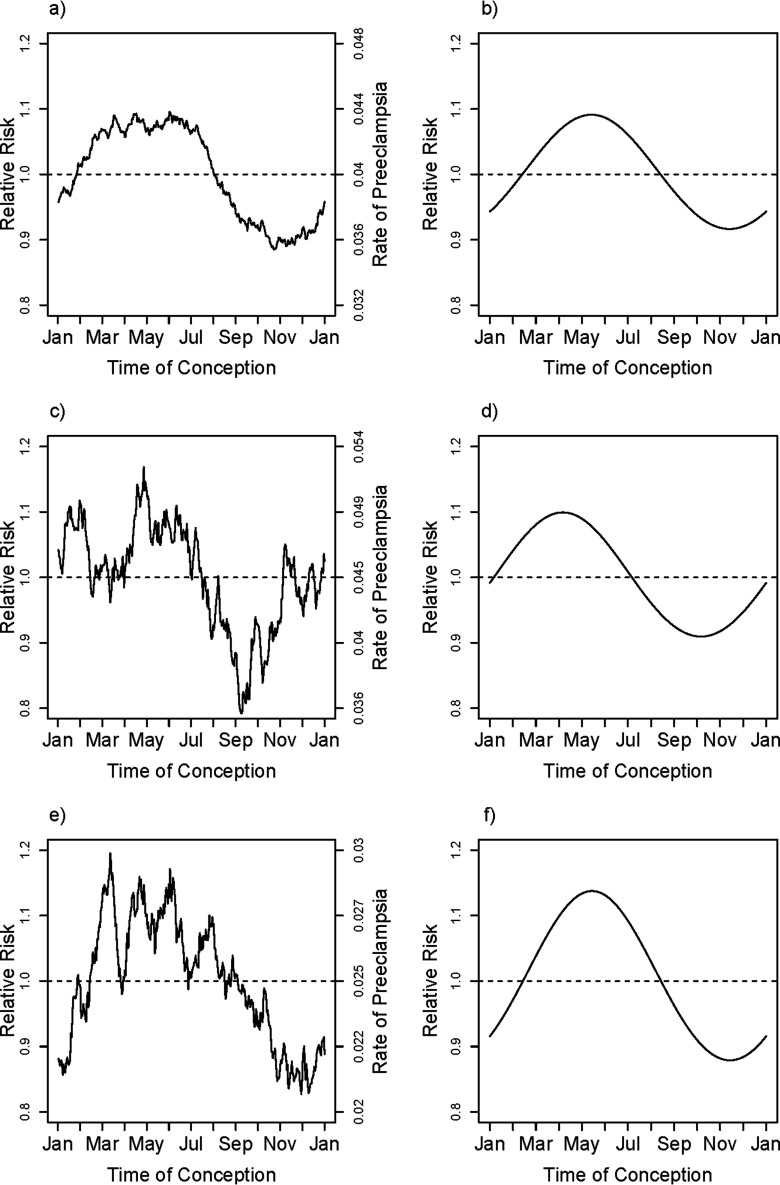Figure 3.
Smoking-behavior–specific unadjusted smoothed rates and fitted adjusted relative rates of PE for nonsmokers (a,b), quitters (c,d), and consistent smokers (e,f) in Norway. The smoothed curve in (a), (c), and (e) is based on a moving average of outcomes that uses a window encompassing from each day of the year, thus estimating the fraction with PE among pregnancies conceived at each day of the year within the three groups of smoking. The fitted relative rates shown in (b), (d), and (f) are based on the first harmonic (sine and cosine) fit separately to the three smoking categories, nonsmokers (a) and (b), women who had initially smoked but had quit by the time of delivery (c) and (d), and women who smoked throughout the pregnancy (e) and (f) with models that are adjusted for the covariates maternal age, maternal age squared, education, primiparity, marital status, region (in three categories) and interaction between primiparity and region. The curve shown is based on entering the region-specific mean for all covariates, centering the estimated log hazard ratio and then exponentiating it. Note that the absolute rates have different midlines for the three categories.

